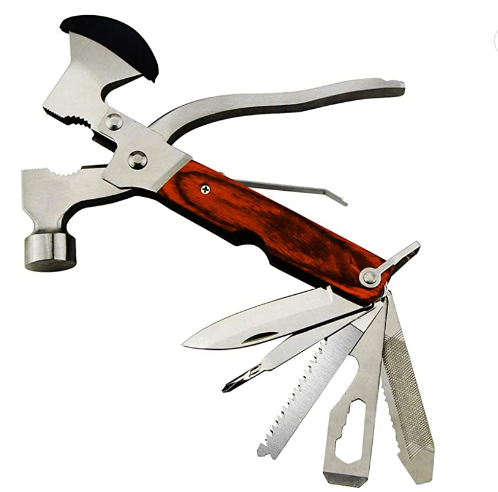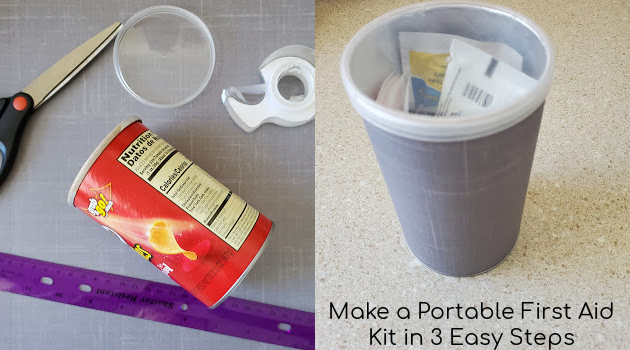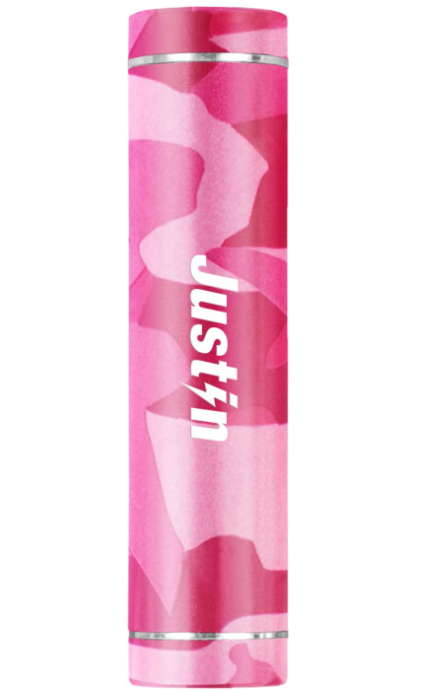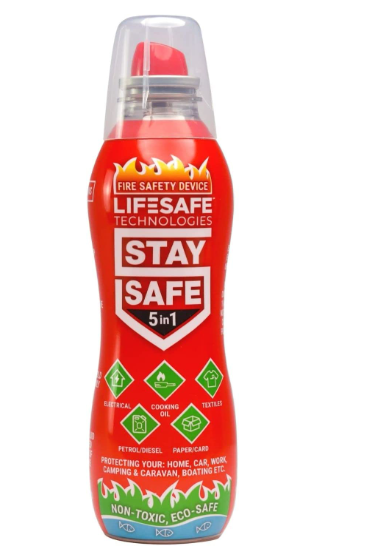Keep these twenty emergency items in your car. If you have an unforeseen delay–like a weather event that shuts down an interstate–you will have a few basic resources to deal with it.
Life is unpredictable. Consider the motorists who got stranded in a blizzard on I-95 in Northern Virginia on a cold winter day. Stuck for almost 24 hours, people ran out of fuel, food and drinks, and many shivered in the cold, not dressed for this delay.
Or what if you slide off the roadway and into a ravine? You may survive the accident, but perhaps you are injured and unable to climb out. If you get a strong cellular signal, your wait for rescuers would be short. But what if you had no service?
What about an unexpected forced evacuation of your home–like a fire or in the aftermath of a tornado? A few essentials would give you just the tiniest bit of comfort. At least you would have a couple of basic things.
Of course, it need not be anything as dramatic as an accident or foul weather. Even a simple breakdown in a remote area requires preparedness on your part.
Twenty Life-Saving Emergency Items to Keep in the Car
Please consider making space for these essentials. Keep in mind that your needs may vary depending on where you live. For instance, someone residing in the cold climate of the high western mountains needs to prepare for cold weather while someone in sunny south Florida does not need to worry as much about hypothermia. So feel free to make this kit to suit you!
These items should provide you food for thought.
1 – Bottled water
Pack a couple of gallon bottles of water or a case of individual bottles in the storage compartment of your vehicle. You cannot survive more than a few days without it in the best of circumstances. But what if you were stuck in a sweltering climate?
Not only would it help you survive an extended period in the vehicle, but you can also use it for rinsing your hands. sharing with your pet, or adding to the vehicle’s radiator if it overheated.
2 – Flashlight and extra batteries
A nighttime breakdown, especially in rural areas, can be very scary. You need to assess the problem quickly and safely. A flashlight is the correct tool to illuminate under the hood. Furthermore, you should carry an extra pack of batteries, in case the ones in the flashlight fail at an inopportune moment.
3 – First aid kit
A first aid kit is one of the things some people forget when thinking about keeping emergency items in the car. Include basics like these:
- Antibacterial ointment
- Gauze pads
- Hand sanitizer
- Scissors
- Tweezers
- Bandages
4 – Cell phone charger (you probably already have this, but we will still mention it as one of the key emergency items in the car)
You can’t make a phone call for help with a dead battery. Although you likely have a cell phone charger in your vehicle, it’s worth the reminder in case you do not.
If you invest in a new phone after you add this to your emergency items in the car, also remember to check to make sure the cord is still correct so you stay prepared.
5 – Power bank for your cell phone
In case of a dead automotive battery, you would need a way to power your phone. Then you can make and receive calls, send text messages, and keep your lines of communication open.
A power bank will give you the “juice” you need to give your phone a full charge so you can stay in the loop with family and friends, rescue services, or keep up with the weather.
Editorial Note: I personally have the Justin Power Bank, as shown in the image below. It is compact and fits in a tiny space. I have used it after a tornado that left us without power for several hours. My cell phone died in the aftermath. Then I remembered this handy little thing in my car, retrieved it to the house, and fully charged both my phone and my husband’s. I personally vouch for the Justin Power Bank.
6 – Non-perishable foods
Consider packing a small snap-lid container with non-perishable foods in your car emergency kit. Pack 2000 calories of food for each usual passenger. Think:
- Fully-cooked reheat and serve canned foods with a pull-top lid (soups, spaghetti rings, etc)
- Nuts in a sealed jar
- Dried fruit, like cranberries, blueberries, or raisins in sealed mylar bags
- Individually wrapped granola bars
- Cereal bars
Of course, you must check the expiration dates and conditions of these food items periodically, rotating and freshening the supply. When you pack your non-perishable foods, also toss in a couple of dollar store utensils.
7 – Pet food (Fido thanks you for packing his emergency items in the car!)
If your beloved pets travel with you often, ditto for their food, as well! Incidentally, a collapsible pet bowl to serve his or her water and food takes up almost no space and is super-affordable. Store this in a tightly-capped container to avoid pest infestation and mold.
8 – Blanket or a sleeping bag
Packing a blanket (or however many you need for your family) is of particular consideration in cooler climates or during the winter season. Hypothermia can set in quickly, especially in wet conditions. A sleeping bag is the bulkiest of the emergency items in the car, and you might find it a nuisance.
In the summertime, you can remove it to create space for family road trips–just remember to put it back in before the cooler weather.
9 – Multi-function tool
A multi-function tool with a pocket knife, screwdriver, scissors, can opener, hammer, axe, and tiny saw can assist you in unforeseen ways. It may seem silly when you look at it. But you will appreciate it if the need ever arises.
Leave this tool accessible in the center console–you could use it to smash out your window if necessary.

10 – Mechanics’ tools
This might go without saying, but a small toolbag of mechanics’ tools could help you get back on the road after a minor breakdown. Even if you cannot make a “permanent fix” on the roadside, it could help you get to the next exit or nearest repair shop. Thus, you can avoid a costly tow truck.
11 – Reflective emergency items: triangles, tape, vest
It is best practice to remain inside your vehicle, but you also need to increase visibility. Avoid being struck by another motorist by keeping one or more of these reflective emergency items in your vehicle:
- A reflective vest to wear, making your body more visible as you perform minor repairs.
- Reflective triangles to set up around your car to make it more apparent to approaching vehicles.
- Reflective tape to put on yourself, the bumper of your car, your children, or pet collars if they need to exit the vehicle for any reason.
12 – Pocket knife
A pocket knife might sound redundant, as you already know you need a multi-purpose tool. However, a knife slips easily into your pocket and will be more readily accessible and lighter weight.
13 – Tire repair supplies
A flat tire is among the most common roadside emergencies. All it takes is driving over one nail in a parking lot to wreak havoc on your day.
Along with your other auto repair emergency items, pack the following tire repair supplies:
- A tire inflator with an air compressor that runs on a battery.
- Emergency repair sealant that will inflate and seal a puncture, getting you to a tire repair shop.
- A tire gauge to check for correct inflation.
- Spare tire. Keep it inflated, checking it whenever you change the oil.
- Tire wrench to loosen and tighten lug nuts.
- Car jack.
14 – Jumper cables
Besides tire repair, a dead battery is another common issue that strands motorists. This concern is especially real after leaving your car sitting for an extended period in icy cold conditions.
The fix for that is a jump-start. You have two choices these days: inexpensive, old-school jumper cables that charge your battery with the assistance of a good samaritin. Or, you can spend a little extra and get a jumper cable power box that reserves power until you need it.
Either one is an excellent option and a must for every vehicle.
15 – Duct tape (one of the most versatile emergency items in your car)
It sounds silly, but versatile duct tape can do everything from holding gauze in place, and applying pressure to a wound to wrapping frayed electrical wires for a temporary fix.
16 – Sturdy shoes
You might encounter an emergency on the very day you were wearing your favorite flip-flops on a beach trip. While they might be all good for fun in the sun, what happens if you run out of gas and need to trek miles to a gas station?
The next time you purchase new athletic shoes or hiking boots, don’t discard the old pair. Instead, put them in a plastic bag to stay dust-free and toss them in the trunk of your car. Should the need ever arise, you have appropriate footwear to get out of an emergency.
17 – A change of clothes
There is no more uncomfortable feeling than wearing wet, sticky clothing. A vehicle emergency in the rain or snow can leave you miserable. Even more concerning is how quickly hypothermia, a drop in the body’s core temperature to 95° F or less, can set in.
Dry clothing, especially undergarments and socks at a minimum, is a must-pack during your wintertime travels. If you must remove wet clothing but forgot to pack these, you can always strip down and huddle into your blanket (see #8). But warm, dry clothing could be the key to survival in such harsh conditions.
A rain poncho also adds value to your kit of emergency items.
18 – Whistle
Yes, a plain old whistle like your high school gym teachers wore around the neck. If you slide off a roadway and have to make your presence known to search and rescue, a whistle could help them locate and reach you faster.
This tiny tool takes up almost no space in your center console, does not require batteries, and is almost indestructible.
19 – Fire extinguisher
Engine fires are electrical in nature. Thus, you can’t pour water on them–you need a Class B or Class C fire extinguisher to put out the flames.
In the case of an engine fire, you must act decisively and quickly before the heat gets to flammable fluids. Remain as far away as possible, and apply the foam in a sweeping motion, concentrating on the source of the fire.
If you cannot douse the fire safely, then exit the area as quickly as possible. Get your passengers, yourself, and your pets away from the vehicle. Your car and personal effects are replaceable–lives are not.
20 – Toilet paper
Let’s be honest. If you find yourself stuck on the side of a highway for hours due to a disaster, you will need to eliminate at some point. In fact, a roll of toilet paper would be a luxury when you consider the alternatives you’ll find in the woods.
Making Room for These Car Emergency Items
This sounds like it will take up tons of space. But really, it will not. Your repair tools can all go into a toolbox or bag. You can stow the tire repair items in the spare tire compartment. The food supplies can go into a small shoebox-sized lidded plastic container. And everything else can go into a small duffle bag or into cubbies in your car.
Maintain Your Vehicle Emergency Items
Like all preparedness, you need to do some follow-up to ensure that everything stays ready for use. Every few months, do a quick visual inspection to ensure the following:
- The bottled water is free of cracks or leaks. It remains within the expiration date.
- Food items remain fresh and free of pests.
- First aid items are within the “use by” date.
- Powered items like the cell phone charger and electric tire inflator or jumper cables still have a full charge.
- The fire extinguisher is within its date.
- The car’s spare tire is inflated to the proper pressure.
- Refresh the pet food, it goes moldy fast.
Hint: When you change your oil, give these a quick lookover.
The Takeaway: Supply Your Car with These Twenty Emergency Items That Could Save Your Life
The chances are good that you will never need these emergency items you keep in your car–what a blessing! But should the need arise, it will give you comfort to know that you have the tools to stay safe and handle it.
What emergency items do you keep in your car or truck? Share your thoughts with us on social media. W have a Facebook page and a very vibrant and active page on MeWe. Until the next time, hope you have a happy DIY day.






